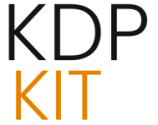
Expanding the Funnel Mouth: Strategies for Driving Intent-Rich Traffic
A perfectly optimized landing page is a silent fortress without traffic. Driving the right visitors—those actively seeking the solution your lead magnet addresses—is the workhorse of sustainable growth. This requires a dual strategy: the slow, steady burn of organic authority and the immediate, targeted strike of paid media.
Capturing Intent: Organic Search and Contextual Content Upgrades
Sustainable, high-quality leads are those who find you while they are in the act of researching a solution. This means aligning your lead magnet directly with your pillar content—the in-depth, authoritative articles that establish your firm as a go-to resource on a specific legal topic.
Consider this flow: A user searches Google for “What to do after a contractor dispute in [State].” Your in-depth pillar article on the topic ranks well. Midway through that 5,000-word article, you present a content upgrade—a perfectly relevant, context-specific offer—such as the Contractor Dispute Resolution Template. The visitor is already engaged in high-intent research; the conversion friction is low because the offer is immediately applicable to the exact pain point they are reading about.
SEO targeting here must be precise. We are not optimizing for vanity keywords; we are optimizing for problem-aware* traffic. The content upgrade itself, while a powerful conversion tool, should also be marketed separately to build domain authority around that specific topic. The synergy between the deep-dive article and the compact lead magnet creates a powerful feedback loop for search engines and users alike. For more on building out these authority hubs, study the concepts of digital marketing authority building.
Surgical Strikes: Micro-Targeting with Paid Media
Organic traffic is the marathon; paid media is the sprint. When using paid channels—whether search engine ads or social media placements—your budget must be used with surgical precision. The fundamental error is advertising the firm’s services directly to a cold audience. The correct approach is to advertise **the value of the lead magnet** to an audience that has self-identified their need.
For example, if you are promoting a “Divorce Document Preparation Checklist,” the ad copy must promise immediate relief from that specific task, not “The Best Divorce Lawyers in the City.” The targeting must then be narrowed:
This micro-targeting ensures your Cost Per Lead (CPL) remains manageable and the quality of the lead is inherently higher. You are not buying generalized attention; you are buying highly qualified intent. This focused approach maximizes your return on investment, ensuring marketing dollars fund a pipeline, not just fleeting awareness.. Find out more about High-conversion landing page design for legal offers guide.
The Long Game: Segmented Nurturing from Prospect to Client
The moment a name lands in your CRM is the start of the relationship, not the finish line. The primary technical challenge in the nurturing phase is segmentation. You cannot afford to treat a prospective client seeking Family Law advice the same as one interested in Commercial Litigation. The email fatigue from irrelevant content is a primary driver of unsubscribes and, worse, silent indifference.
Building the Intelligent Email Flow: Interest-Based Segmentation
The initial lead magnet choice provides your first, and most valuable, segmentation opportunity. If a lead downloaded the “Estate Planning Guide,” every subsequent communication in their automated sequence must reinforce that specialty. This is where the power of automation platforms shines, but only if programmed correctly.
A basic, high-conversion nurture sequence (post-download) might look like this over three weeks:
The key is the pivot—the transition from education to action. This pivot cannot be jarring. It must feel like the logical next step after consuming several pieces of highly relevant, free expertise. A generic, untargeted blast to your entire contact list will destroy the equity you built in the first three emails. Remember, the potential for revenue gain from precise email marketing is astronomical—segmented campaigns show up to a 760% revenue increase compared to generic ones .
The Consultative Pivot: From Educator to Professional Advisor
The final hurdle in nurturing is the transition from providing information to requesting commitment. This must be handled with finesse. After delivering significant, consistent value, the lead has established your expertise and reliability. They are now mentally primed to trust your paid counsel, but only if invited correctly.. Find out more about Seamless CRM integration for captured legal leads strategies.
The pivot email, sent perhaps 10 to 14 days after the initial download, should frame the consultation as a personalized extension of the free education. Instead of a generic “Call Us Now,” try:
“You’ve reviewed the complexities of [Lead Magnet Topic]. If you’re ready to see how these principles apply specifically to your situation—whether it’s structuring your new business or reviewing your existing trust—we invite you to a complimentary, confidential Strategy Session. This isn’t a sales call; it’s a dedicated 30-minute session to map out your first three actionable legal steps.”
This language respects the journey, acknowledges the value already provided, and positions the consultation as the *highest-value* piece of content you offer. This gradual, value-stacked progression is what moves prospects from casually researching an issue to actively retaining your firm’s services.
Conclusion: The Enduring Blueprint for Digital Legal Authority in 2025
The technical execution of lead capture is not about flashy software; it is about an unwavering commitment to the user experience at every digital touchpoint. In 2025, success in legal marketing is no longer defined by the sheer volume of leads, but by the efficiency and speed with which anonymous traffic transforms into qualified, nurtured pipeline opportunities.
The blueprint is cyclical and unforgiving:
Your firm’s digital footprint must reflect the same meticulous attention to detail you promise in the courtroom or conference room. By treating your lead capture mechanisms with technical rigor—by building pages that load instantly, forms that respect the user, and workflows that respond with lightning speed—you do more than just market; you establish enduring, demonstrable authority in an increasingly crowded digital marketplace. The choice is simple: be the firm that operates at the speed of the modern client’s need, or be the one they forget while they wait for a page to load.
What’s Your Next Friction Point?
Take a hard look at your top-performing lead magnet landing page *today*. Is the load time under one second? If not, that is your immediate, highest-leverage technical priority. Let us know in the comments where your biggest friction point lies—is it the load speed, the form length, or the follow-up automation?. Find out more about High-conversion landing page design for legal offers definition guide.
Additional Reading on Page Speed Impact: While this article references 2025 benchmarks, a foundational study noting that even a one-second delay in page load can reduce conversions by approximately 7% is consistently cited across industry analyses. PracticeProof: 2025 Key Law Firm Marketing Benchmark Metrics.
Source for Sub-Second Load Conversion: Data suggests landing pages that load in one second or less can achieve conversion rates of 31.79%. Blogging Wizard: 27 Top Landing Page Statistics For 2025.
Source for Legal Services Conversion Rate: Industry reports place the average conversion rate for Legal Services around 3.4% for form fills/lead actions. First Page Sage: Landing Page Conversion Rates by Industry: 2025 Report.
Source for Field Reduction Impact: Industry analysis suggests that each additional form field can reduce completion rates by as much as 10%. Wildnet Technologies: Lead Capture Forms: Top 10 Strategies to Increase Conversion.
Source for Law Firm Response Time: Data from 2025 indicates 25% of law firms respond to online leads in under five minutes. Hennessey Digital: 2025 Lead Form Response Time Study.
Source for Competitor Loss on Slow Response: Research indicates that 30% of consumers will immediately turn to a law firm competitor if a lead is not responded to promptly. Law Firm Marketing Pros: The Impact of Lead Form Response Time.
Source for Email Segmentation Revenue: Email marketing data shows segmented campaigns can generate up to 760% more revenue than non-segmented ones. GrowLaw: Key Law Firm Marketing Benchmark Metrics for 2025.
Source for Speed Cost (Recap): Reaffirming the cost of slowness for continuity. PracticeProof: 2025 Key Law Firm Marketing Benchmark Metrics.
Source for Legal Conversion Rate (Recap): Reaffirming the industry benchmark. First Page Sage: Landing Page Conversion Rates by Industry: 2025 Report.
Source for 5-Minute Response Time (Recap): Reaffirming the high-speed necessity for legal firms in 2025. Hennessey Digital: 2025 Lead Form Response Time Study.
Source for Segmentation ROI (Recap): Reaffirming the revenue impact of targeted nurturing. GrowLaw: Key Law Firm Marketing Benchmark Metrics for 2025.








